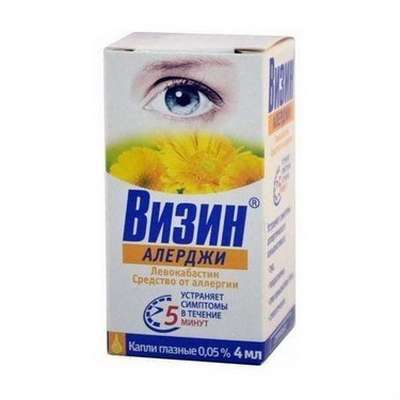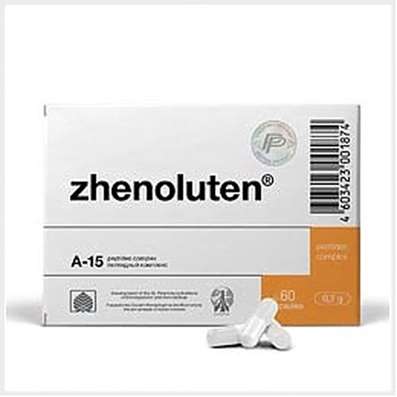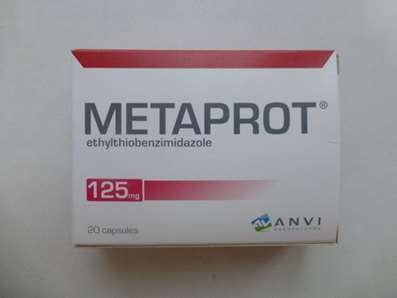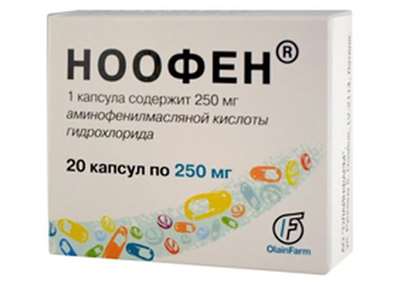Instruction for use: Lasolvan Rhino
I want this, give me price
ATX Code R01AA09 Tramazoline
Pharmacotherapeutic group:
Decongestant agent - alpha-agonists [alpha agonists]
Decongestant agent - alpha-agonists [decongestant]
The nosological classification (ICD-10)
H66.9 Otitis media, unspecified
Chronic otitis, Otitis, otitis media, middle ear infections, Otitis media in children
H68 inflammation and blockage of the ear [Eustachian] pipes
Eustachian, acute evstahiit, Qatar Eustachian tubes, Evstaheit
J00 Acute nasopharyngitis [runny nose]
Viral rhinitis, Inflammation of the nasopharynx, Inflammatory diseases of the nose, purulent rhinitis, Nasal congestion, Nasal congestion with colds and flu, The difficulty of nasal breathing, The difficulty of nasal breathing for colds, Difficulty in nasal breathing, Difficulty in nasal breathing in colds, nasal, hypersecretion, cold, ARI with rhinitis phenomena, coryza, Acute rhinitis of various origins, Acute rhinitis with thick purulent mucous exudate, Acute nasopharyngitis, Swelling of the mucosa of the nasopharynx, Rhinitis, rhinorrhea, Infectious-inflammatory diseases of ENT organs, heavy cold, rhinopharyngitis, nasopharyngitis
J01 Acute sinusitis
Inflammation of the sinuses, Inflammatory diseases of the paranasal sinuses, Purulent inflammation of the paranasal sinuses, Infectious-inflammatory diseases of ENT organs, Infection of the sinuses, Combined sinusitis, Exacerbation of sinusitis, Acute inflammation of the paranasal sinuses, Acute bacterial sinusitis, Acute sinusitis in adults, Subacute sinusitis, acute Sinusitis, sinusitis
J06 Acute upper respiratory infections of multiple and unspecified
Frequent colds viral diseases, Infections of the upper respiratory tract, Acute respiratory disease influenza character, for colds Pain, Acute colds,Cold, respiratory infection,Seasonal colds, Pain in infectious and inflammatory diseases of the upper respiratory tract, Bacterial infections of the upper respiratory tract, Bacterial respiratory infections, Viral disease of the respiratory tract, Viral respiratory tract infections, Inflammatory disease of the upper respiratory tract, Inflammation of the upper respiratory tract disease, Inflammation of the upper respiratory tract illness with difficult sputum, Inflammatory airway disease, Secondary infections with colds, Shortness of sputum in acute and chronic respiratory diseases, Upper respiratory tract infection, Infections of the upper respiratory tract, Respiratory Tract Infections, Infections of the respiratory tract and lungs, Infectious-inflammatory diseases of the upper respiratory tract, Infectious-inflammatory diseases of the upper respiratory tract and ENT-organs, Infectious-inflammatory diseases of the upper respiratory tract in children and adults, Infectious-inflammatory diseases of the upper respiratory tract, Infectious inflammation of the airways,respiratory infection, Qatar upper respiratory tract, Catarrh of the upper respiratory tract, Catarrhal disease of the upper respiratory tract, Catarrhal symptoms of the upper respiratory tract, Coughing with a cold, SARS, ARI, ARI with rhinitis phenomena, Acute respiratory infection, Acute infectious and inflammatory disease of the upper respiratory tract, Acute respiratory disease, Sore throat or nose, Respiratory viral infections, Respiratory diseases, Respiratory infections, Recurrent respiratory infections, Secondary infection with influenza, cold in the chest, Feverish condition with flu usitis, acute sinusitis, genyantritis, purulent sinusitis
J30.0 Vasomotor rhinitis
Rhinitis chronic vasomotor neurovegetative
J30.1 Allergic rhinitis caused by the pollen
hay fever, Hypersensitivity to pollen, Polypoid allergic rhinosinusitis, Seasonal hay fever, rhinitis
J32 Chronic sinusitis
Allergic rhinosinusopathy, purulent sinusitis, Catarrh nasopharyngeal area, Catarrh of the sinuses, Exacerbation of sinusitis, chronic Sinusitis
Composition
Nasal Spray 1 dose
active substance:
tramazolin hydrochloride monohydrate (based on tramazolin hydrochloride) 82 mg
Excipients: citric acid monohydrate - 270 mg; sodium hydroxide, - 154 mg; benzalkonium chloride - 14 g; hypromellose (hydroxypropyl) - 35 g; povidone - 2101 mg; glycerol 85% - 700 mg; magnesium sulfate heptahydrate - 49 g; magnesium chloride hexahydrate - 35 g; dihydrate calcium chloride - 11 mg; sodium carbonate - 1 g; sodium chloride - 183 mg; cineole (eucalyptol) - 7 g, L-menthol (levomenthol) - 14 g; racemic camphor - 14 g; Purified water - 66358 g
Description
Spray: a transparent, pale yellow solution, with the smell of eucalyptus.
pharmachologic effect
decongestant
pharmacodynamics
The active substance Lasolvan® Reno - tramazolin hydrochloride, α2-adrenoagonists causes vasoconstriction. When applied to the mucous membranes of the nose, as a result of a vasoconstrictor action, the drug reduces puffiness. As a result, the permeability of the nasal passages is quickly restored, nasal breathing is facilitated by long time.
Effect of the drug begins during the first 5 minutes and lasts for 8-10 hours.
Pharmacokinetics
Pharmacokinetic studies in humans have not been conducted. Pharmacokinetics tramazolina studied in rats, rabbits and monkeys. It is shown that after application of the drug orally or intranasally absorbed 50-80% of the administered dose. Tramazolin and its metabolites are distributed in all the internal organs, with the highest concentration found in the constancy of the liver. Following oral or topical application defined major metabolites in urine. Terminal T1 / 2 is from 5 to 7 hours.
Indications of Lasolvan® Rhino
swelling of the mucous membranes of the nose, nasal congestion, caused by acute respiratory illness and / or hay fever (rhinitis, hay fever);
sinusitis and otitis media (evstaheit), to facilitate the outflow of the contents of the paranasal sinuses, on doctor's advice.
Contraindications
Hypersensitivity to benzalkonium tramazolina hydrochloride or hydrochloride, as well as other components of the drug;
angle-closure glaucoma;
atrophic rhinitis;
surgery on the skull, carried out through the nasal cavity, a history;
Children up to age 6 years.
Precautions: simultaneous reception of MAO inhibitors, tricyclic antidepressants, vasopressor and antihypertensive drugs; Patients with hypertension, heart disease, hyperthyroidism, prostatic hypertrophy, pheochromocytoma, porphyria - should apply Lasolvan® Reno only on doctor's advice in connection with the presence of the potential risk of systemic absorption of the drug.
Pregnancy and breast-feeding
Long experience in the application shows that Lasolvan® Reno does not have a negative effect on pregnancy.
The safety of the drug during lactation has not been confirmed.
Mucosolvan® Reno should not be used in I trimester of pregnancy. In the later stages of pregnancy and during breastfeeding is allowed to use the drug only after consulting your doctor.
Side effects
The frequency of adverse reactions listed below are classified as follows: often - ≥1% and <10%; infrequently - ≥ 0.1% and <1%; rarely - ≥0,01% and <0.1%; the frequency is set to (1).
From the nervous system: rare - dizziness, dysgeusia; rarely - headache; the frequency has not been established - drowsiness, sedation.
Psychiatric disorders: uncommon - anxiety; the frequency has not been established - hallucinations, insomnia.
From the CCC: rarely - palpitations; the frequency has not been established - arrhythmia, tachycardia, increased blood pressure.
From the side of respiratory, thoracic and mediastinal disorders: often - nasal discomfort; rare - swelling of the nose, dry nose, runny nose, sneezing; rarely - nosebleeds.
On the part of the digestive tract: rarely - nausea.
On the part of the immune system: the frequency has not been established - hypersensitivity.
With the skin side and subcutaneous tissue (2): the frequency has not been established - a rash, itching, swelling of the skin.
General and local disturbances: the frequency has not been established - mucosal edema (2), fatigue.
1) Adverse events whose connection with the drug was regarded as a possible, registered with the broad use of the drug. The frequency of these rare events is difficult to assess.
2) How hypersensitivity symptoms.
Interaction
Some antidepressants (MAO inhibitors and tricyclic antidepressants) and vasoconstrictor drugs, while the appointment can cause increased blood pressure.
Combined reception tricyclic antidepressants can cause arrhythmia.
Simultaneous treatment with antihypertensive agents (especially those that affect the sympathetic nervous system) can lead to different cardiovascular effects.
Dosage and Administration
Intranasal.
Adults and children over 6 years: 1 injection into each nasal passage. To 4 injections in each nostril per day.
Do not use the drug more than 5-7 days without a doctor's prescription.
Instructions for using the bottle with a metering device
nasal passages should be cleaned prior to injection.
1. Remove the protective cap.
2. Before first use, you must make several injections into the air until stable aerosol clouds
Thereafter, the dispensing device is ready for use.
3. Hold your head up, enter a tip in the nasal passage and produce a single injection
Repeat procedure for the other nasal passage.
After extracting the tip of carrying out a breath through your nose.
4. Place the protective cap.
It is recommended to clean the tip after each use.
Overdose
Symptoms: after an increase in blood pressure and tachycardia may (especially in children) fall in blood pressure, shock development, reflex bradycardia, drop in body temperature. As with other alpha agonists clinical picture of intoxication can be indistinct, since the phases of stimulation and depression of CNS and CVS can replace each other. Especially in children, intoxication leads to effects on the CNS: CNS stimulation symptoms are anxiety, agitation, hallucinations, and convulsions; to symptoms of CNS depression include a decrease in body temperature, lethargy, drowsiness and coma. In addition, the possible development of the following symptoms: mydriasis, miosis, sweating, fever, pallor, cyanosis of the lips, cardiovascular dysfunctions (including bradycardia and cardiac arrest); breathing problems (including respiratory failure, respiratory failure); mental disorders.
Treatment: In case of nasal overdose should immediately wash or clean the nose. You may need symptomatic treatment.
special instructions
If after 7 days of administration of the drug is observed positive dynamics of symptoms, you should consult your doctor to decide on termination of the administration of the drug or to continue treatment.
Prolonged use of nasal vasoconstrictor drugs can lead to the development of chronic inflammation and nasal congestion, as well as to atrophy of nasal mucosa.
Avoid getting product in eyes.
Effects on ability to drive and use machines. Studies on the effect of the drug on the ability to drive and use machinery have not been conducted. However, the drug can such undesirable effects, such as hallucinations, somnolence, sedation, dizziness, and fatigue. When the above-mentioned side effects must be avoided execution of such potentially hazardous tasks such as driving and machinery.
release Form
Nasal Spray, 82 mcg / dose. Vial brown glass equipped with a metering device and a nasal adapter, a protective cap, 10 ml. 1 fl. in a cardboard bundle.
Storage conditions of Lasolvan® Rhino
The temperature is not higher than 25 ° C.
Keep out of the reach of children.
Shelf life of Lasolvan® Rhino
3 years.
Do not use beyond the expiration date printed on the package.
Available without prescription

 Cart
Cart





